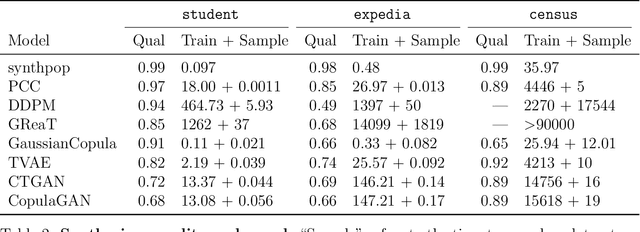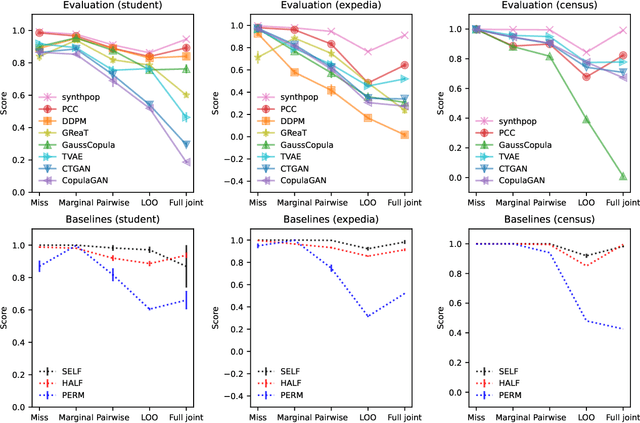Baxter Eaves
Structured Evaluation of Synthetic Tabular Data
Mar 29, 2024


Abstract:Tabular data is common yet typically incomplete, small in volume, and access-restricted due to privacy concerns. Synthetic data generation offers potential solutions. Many metrics exist for evaluating the quality of synthetic tabular data; however, we lack an objective, coherent interpretation of the many metrics. To address this issue, we propose an evaluation framework with a single, mathematical objective that posits that the synthetic data should be drawn from the same distribution as the observed data. Through various structural decomposition of the objective, this framework allows us to reason for the first time the completeness of any set of metrics, as well as unifies existing metrics, including those that stem from fidelity considerations, downstream application, and model-based approaches. Moreover, the framework motivates model-free baselines and a new spectrum of metrics. We evaluate structurally informed synthesizers and synthesizers powered by deep learning. Using our structured framework, we show that synthetic data generators that explicitly represent tabular structure outperform other methods, especially on smaller datasets.
BayesDB: A probabilistic programming system for querying the probable implications of data
Dec 15, 2015



Abstract:Is it possible to make statistical inference broadly accessible to non-statisticians without sacrificing mathematical rigor or inference quality? This paper describes BayesDB, a probabilistic programming platform that aims to enable users to query the probable implications of their data as directly as SQL databases enable them to query the data itself. This paper focuses on four aspects of BayesDB: (i) BQL, an SQL-like query language for Bayesian data analysis, that answers queries by averaging over an implicit space of probabilistic models; (ii) techniques for implementing BQL using a broad class of multivariate probabilistic models; (iii) a semi-parametric Bayesian model-builder that auomatically builds ensembles of factorial mixture models to serve as baselines; and (iv) MML, a "meta-modeling" language for imposing qualitative constraints on the model-builder and combining baseline models with custom algorithmic and statistical models that can be implemented in external software. BayesDB is illustrated using three applications: cleaning and exploring a public database of Earth satellites; assessing the evidence for temporal dependence between macroeconomic indicators; and analyzing a salary survey.
 Add to Chrome
Add to Chrome Add to Firefox
Add to Firefox Add to Edge
Add to Edge